Unlock Faster, Flawless Glass Renders In CINEMA 4D Redshift (Pro Tips You Need)
Here’s a breakdown of the video above with Maxon's Elly Wade, focusing on nailing the glass and liquid look in Redshift.
The Core Challenge: Nested Dielectrics
- Getting transparent stuff inside other transparent stuff (liquid in glass) to render right.
- Key Rule: Liquid geometry must slightly overlap the inner surface of the glass. Feels weird, but it's how Redshift handles these refractions. Check this first if your liquid looks off near the glass edge.
- Glass Geo: Needs real thickness (double-sided polys). Check normals: outer faces out, faces inside the thickness show back-faces, inner bottle surface faces out (towards liquid).
Lighting Setup: Simple but Effective
- Just a Dome Light (HDRI) + Area Light.
- HDRI Choice Matters: Reflections/refractions are super visible in glass. A good studio HDRI helps.
- Crucial Light Setting: For both lights, Details tab -> Contribution -> 'Affected by Refraction' set to 'Always'. Essential for light passing through glass correctly.
- DIY Softbox: Area Light trick: build a procedural softbox in the light's shader graph (Ramp node + maybe Noise via Color Layer) for a softer, more natural look.
-
Cube Background Trick: Large cube around scene. Standard Material, but plug a Ramp gradient directly into the 'Surface' output (not Base Color). Makes the cube an incandescent environment.
- Gives refractions more interesting shapes & provides a background gradient.
- Use a Redshift Object Tag on the cube to disable 'Cast Shadows'.
Texturing: OpenPBR for Glass & Liquid
- Used OpenPBR materials (concepts apply to Standard Material too).
- IOR is Key: Use correct Index of Refraction (e.g., ~1.5 glass, ~1.33 liquid). Different IORs for glass/liquid is vital.
- Roughness: Very low (e.g., 0.01), but maybe not absolute zero.
- Transmission: Enable (Weight 1). Use 'Depth' & 'Scatter Color' for realistic absorption based on thickness. Even clear glass looks better with a small Depth (e.g., 1-2cm) and slightly off-white Scatter Color. Depth=0 just tints evenly.
- Liquid Color: Set via Transmission 'Color' (if Depth=0) or 'Scatter Color' (if Depth > 0).
Trace Depths: Non-Negotiable for Glass
- Huge deal. If glass renders black/weird, check Render Settings -> Advanced -> Globals -> Trace Depths.
- Defaults are often too low. Light needs many bounces to get through nested glass/liquid.
- Increase 'Refraction' depth significantly (maybe 16+).
- 'Combined' depth must be >= highest individual depth.
- Optimization Tip: Override depths per-material via Redshift Object Tag -> Optimization tab if needed.
Adding Finer Details
- Surface Tension: Fake the liquid's edge curve (meniscus). Use C4D 'Select Facing' node to select top liquid polys. Apply a second material instance restricted to this selection. Use a 'Round Corners' node in Bump Map (small radius).
- Microsurface Imperfections: Subtle realism. Use Maxon Noise -> Displacement node on glass material. Control via RS Object Tag -> Geometry -> Override (Enable Tessellation & Displacement). Keep displacement scale tiny (e.g., 0.01). Breaks up perfect reflections slightly.
- Embossed Lettering: Quick UV unwrap (Cubic projection). Export UV mesh layer to Photoshop. Create text/logo on mid-grey, apply slight Gaussian Blur. Use this texture in another Displacement node (negative scale to indent). Combine displacements with a 'Displacement Blender' node.
Rendering & Optimization: Big Speed Gains
- Glass renders are slow. Manual sampling helps speed things up massively.
- Manual Setup Example: Turn off Automatic Sampling. Threshold 0.01. Min Samples 16, Max Samples 1024. Override Reflection/Refraction samples much higher (e.g., 2048). GI: Brute Force + Irradiance Point Cloud (faster than double BF), increase BF GI Rays, tweak RPC settings ('Retrace Threshold' up, 'Screen Radius' down).
- Result: Huge render time reduction (e.g., 8min -> <3min) with little visual difference. Worth it for production.
Final Polish
- Standard practice: final look achieved with post-processing/color grading (e.g., Magic Bullet Looks).
